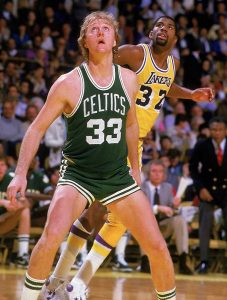What if I told you that in 2002, baseball was revolutionized by mathematics? Would you believe me? Well, nobody at that time believed that Billie Beane’s statistical methods would change the way player acquisition works in the MLB. And nobody imagined the success that this statistic-minded system would generate for the Oakland Athletics in the historic 2002 season. Billie Beane managed, against all odds, to beat the money-driven system that reined in the Major League Baseball and proved the world wrong.
Billie Beane grew up playing and learning about baseball. He was a big prospect during his youth and by the time he was in college, he received an offer from the New York Mets to play in the big leagues. He chose baseball and money over his studies, and that is how he entered the MLB. Many years later, Beane said that this decision was the only one he would do just for the money.1 And even though he didn’t have a successful career as a player, he did shine as a general manager.

In his fifth year as a general manager for the Oakland Athletics, Beane decided he had had enough. The team had really been struggling; free agents were leaving and the results were discouraging season after season. The Athletics were one of the poorest teams in the league, so they did not have the budget to acquire the top free agents in the market (see image 1). And right before the beginning of the 2002 season, Beane and his assistant, Paul DePodesta, sat down and found a way to create a playoff contender team with the small budget they had available.
DePodesta wasn’t the usual general manager’s assistant. And that is one of the reasons why Beane was so successful when implementing his new approach to the game. But why did Beane have an Economics graduate from Harvard as his assistant? He did know a lot about baseball, but what made him different from other assistants was his analytical approach to the game. He saw the baseball-player market from a different perspective, and that is why he could see what other scouts couldn’t. That is why he was able to find the players Beane needed, in order to show the world that money wasn’t everything. But, why did people think that having a huge payroll was the key to winning baseball games?2
The Major League Baseball at the time was thought to be money-driven. Many argue that every sport is so driven in the modern era. And during the final years of the twentieth century, MLB salaries were increasing rapidly.3 Big teams, like the New York Yankees and the Boston Red Sox, had the budget to buy the top free agents of the league. That is why Beane wanted his team to stop trying to do what the big teams were doing. They simply didn’t have the same kind of money. In fact, the Oakland Athletics had almost the lowest payroll in the league. This is why Beane focused on finding players that had not yet been noticed but were consistent and cheap. So, how did Beane and DePodesta make this system work?
As the 2002 MLB draft was approaching, Beane and DePodesta started analyzing players. Instead of focusing on judgments from experts, like scouts and coaches, they focused on undervalued players that showed potential on unexplored areas of the game (overlooked and undervalued stats). This lead to skepticism from the organization and from the fans around the world. However, Beane’s determination, which jeopardized his job, proved to be stronger than all the criticism he had to face at the beginning of the season.4

Baseball is a statistical sport, and it regularly generates statistical information about players. There are several ways to measure a player’s offensive productivity in baseball. The most common measure of productivity at the bat is called the batting average. This average is simply the ratio of hits to the amount of times a player is at-bat. This measurement, along with the slugging percentage (total bases divided by at-bats) were regularly used by coaching staffs around the league to determine the value of a player. However, these measurements don’t take into consideration the sacrifices and walks a player gets. By ignoring these other statistics, coaches and managers often missed a lot of information about the players they were acquiring. Beane, instead of focusing on the popular measurements, focused on acquiring players with a high on-base percentage (how often a player receives a walk). This was crucial for the system to work, given that on-base percentage was greatly undervalued at the time. It allowed Beane to create a team with disciplined hitters without spending too much money, which proved to be key for the Athletics’ success.5
One of the first moves Beane made before the 2002 season was drafting David Beck, a low-key player that went unnoticed by most of the teams. He was the first draft pick that came out of Beane’s new system. He then fired his head scout and used the amateur draft to acquire cheap players. Before the 2002 draft, Beane’s scouts were ordered to not even consider acquiring high school players, because there were few statistics about their game. Beane told everyone to stop focusing on the strong hitters and asked for consistency. An example of this approach is Mark Teahen, a player DePodesta liked due to his consistency to get on base. And so, Beane created a shortlist of players who were not seen as MLB material. Some of them were overweight, others were slow. And every time the scouts thought they had found a good candidate, their GM didn’t agree.6
After the 2002 draft was over, Beane managed to acquire most of the players on his wish list. Why? Because no other team wanted them. And as the season progressed, the Athletics used the same approach to trade players. This caused Beane to loose the organization’s trust and support. There were even times when he was questioned by DePodesta. However, he was a man with a mission; and for the first time, he knew exactly how to accomplish it.7
How did the new system impact the team? At first, morale was low and the team wasn’t getting the results Beane expected. However, as the season progressed and trades were made, good news started to happen. The true success came in the second half of the 2002 season. The trade for John Mabry, which was seen as irrational, really had a positive impact on the team’s results. Not long after acquiring him, Oakland passed from having a record of 20-25 to an astonishing record of 60-46.8 This 2002 season, the Oakland Athletics set a record for consecutive wins in the American League history (20 games). And they ended up the season with a remarkable 103-59 record.9

It is important to know that even though Beane and DePodesta were the first ones to implement this strategy in the world of baseball, their work was based on Bill James’ proposition. Bill James is known as “the father of sabermetrics.” He started writing about baseball statistics in the late 70s and he was the one who initially realized that GMs in the MLB weren’t using and interpreting statistic correctly. He even started a business with the sole purpose of measuring and publishing baseball statistics. Failing to create awareness on the subject, James had to wait until Billy Beane put his work in action.10
Even though the Oakland Athletics failed to win it all that season, Beane achieved his goal and created a playoff team. He demonstrated to the world and to himself that money wasn’t the only thing that mattered when it came to winning. This team gave a historic season to the city of Oakland and they set an example for teams around the league.
This style of management and scouting affected the league in several ways. The use of sabermetrics has increased over the years and now every team relies on it for their decision-making process. Thanks to technology, more statistics can be measured and managers and scouts have more input on a player’s value. When asked if the analysis of statistics and sabermetrics has improved the management of baseball, Bill James said: “I don’t know that it has, but we produce information, and information ties the fans to the game. People in a culture with no information about baseball have no interest in baseball.”11
Talking about Bean himself, the introduction of this method to the league and the 2002 season in general made him one of the most famous general managers in history. Even though some people said that the results were a matter of luck, Beane and DePodesta showed through their success that the decision-making process in the MLB needed to change. Beane was even offered the General Manager position for the Boston Red Sox, an offer that would have made him the highest paid general manager in history.12 However, as tempting as it sounded, Beane wasn’t able to sign the contract and leave his team behind. He continued to work with DePodesta in the city he loved and found joy in his work again, all this while redefining management in baseball.
- Michael Lewis, Moneyball: the art of winning an unfair game (New York: W.W. Norton, 2003), 15. ↵
- Michael Lewis, Moneyball: the art of winning an unfair game (New York: W.W. Norton, 2003), 18. ↵
- Jahn Hakes and Raymond D Sauer, “An Economic Evaluation of the Moneyball Hypothesis,” Journal of Economic Perspectives 20, no. 3 (2006): 180. ↵
- Jahn Hakes and Raymond D, “An Economic Evaluation of the Moneyball Hypothesis,” Journal of Economic Perspectives 20, no. 3 (2006): 180-182. ↵
- Jahn Hakes and Raymond D, “An Economic Evaluation of the Moneyball Hypothesis,” Journal of Economic Perspectives 20, no. 3 (2006): 174-175. ↵
- Michael Lewis, Moneyball: the art of winning an unfair game (New York: W.W. Norton, 2003), 25-35. ↵
- Michael Lewis, Moneyball: the art of winning an unfair game (New York: W.W. Norton, 2003), 25-35. ↵
- Michael Lewis, Moneyball: the art of winning an unfair game (New York: W.W. Norton, 2003), 166. ↵
- Sandy Mochamad and Utami Ami, “Analysis of Decision Making Process in Moneyball: The Art of Winning an Unfair Game,” Journal The Winners: Economics, Business, Management, And Information System Journal 16, no. 1 (2015): 59. ↵
- Michael Lewis, Moneyball: the art of winning an unfair game (New York: W.W. Norton, 2003), Chap 4. ↵
- Brian Costa, “Bill James and Billy Beane Discuss Big Data in Baseball,” Wall Street Journal (Online) 1 (September 2015): 15-17. ↵
- Michael Lewis, Moneyball: the art of winning an unfair game (New York: W.W. Norton, 2003), 230. ↵



40 comments
Jose Maria Llano Aranalde
Its really interesting to see the general manager and his assistant not following the norm and doing what they believed in. No one else in baseball was doing what they were doing. Both of them truly believed in their plan and give up on it. They showed that money isn’t everything in sports. Money is a big part but so many teams don’t invest in players and coaches properly and that’s why they never win. They were able to change the organization without having to buy big free agents like the rest of the teams.
Sebastian Portilla
Baseball is such an amazing and exciting sport. I love it! Statistics really made the game more exciting and interested. The top baseball players with the incredible numbers such as batting average, home runs or RBIs would be considered the elite players. Though stats did impact the game greatly. Before stats the game was about just about contributing to the team. That still exists but sometimes Nowadays its more self centered.
Bianca-Rhae Jacquez
This article is very interesting and it shows people a side of baseball many wouldn’t understand. I am a huge baseball fan and I enjoy a good underdog story. The Oakland A’s is a team that many look past but they are the ones that opened so many doors for people. With out the use of statistics baseball would be a different game. Now a days everyone judges a played by their stats from major league to t-ball.
Andres Cano
I think this article values an aspect of baseball that not many people know about and I commend the author for taking his time to recognize the undervalued statistics that make role-players important, not just in baseball. Growing up I always batted with a good batting average, but since I grew up in a family of math freaks, me and my dad would calculate my own stats in my little league games. Although I never had the best batting averages on the team, when I was 11-12 years old, I saw seasons with .800 on base percentage, which made me a valuable leadoff hitter. Because I was a small player, it was easy to see that I didn’t have as much power as some of the other boys on the field, but one day I got picked for a team that saw my value and we went and won a Championship.
Octaviano Huron
What an interesting story! I had played baseball up until high school, but I had never paid attention to just how much strategy was used to not only play the game, but how to utilize the players and their overlooked abilities. I liked how Beane and DePodesta proved to the entire league that money and success are not interchangeable, and that the former doesn’t always result in the latter. Overall, very intriguing article.
John Berka
This article was very well done and quite interesting! As a baseball fan myself I always enjoy reading about underdogs and long shot teams and this Oakland A’s team sure fits that bill. Although I do follow baseball I had never heard of Billy Beane before reading this. Nowadays all these statistics seem so overblown by everyone that it’s hard to believe that just a little over a decade ago these stats were hardly even used.
Megan Copeland
This was a very well written and researched article. There were so many proven details throughout this article that helped me understand the article more. I think it is so cool that Beane believed in himself so much and was able to achieve his goals. He proved that baseball is more than just all star players but it has so much to do with managing and keeping the team well organized.
Lamont Traylor
This article honestly makes me appreciate the work that TSA workers do in finding bombs or to a lesser extent, just things that people bring onto planes that they know could be harmful to the flight of the plane and to the passengers that are also flying in the plane. That Malaysian airline must have had some slip up in the TSA part of the airport.
Daniela Duran
This was a great article Jose! I really like how you provided many explanations about the way baseball and its statistics work, because for someone that does not know much about baseball, that is extremely useful! I am impressed by the faith that Beane had on his own plan, and I believe he is an example to follow on how we must trust our own instincts and ideas, even when everyone thinks they are crazy. Importantly, he proved to the world that not everything is about money, nor about having the best-paid players…it is simply about knowing how to manage things for the good of the entire team.
Lamont Traylor
I don’t really like, pay attention to, or care about baseball but I do play basketball and volleyball and I tried to imagine what those sports would be like if they did not have statistics and I came to the conclusion after reading this article that it would be terrible if we didn’t have stats for our sports. Stats are very important when it comes to telling who is good and bad at the sport.